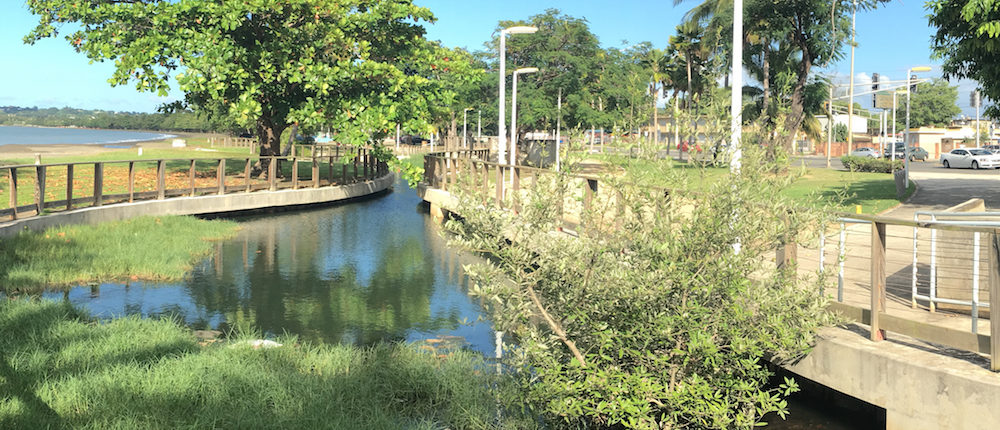
Common Edge Podcast: Landscape Architecture in the Age of Climate Change
Walter Meyer and Jennifer Bolstad founded their Brooklyn-based firm, Local Office Landscape Architecture (LOLA) a little more than ten years ago and quickly established the practice at the forefront of resilience by tightly integrating design and science. In this podcast I talk with the partners about the relationship between science and design; how to apply community organizing principles to billionaire developers; the difference between sustainability and resilience; and how the firm became an advisor to the Obama Administration.
One of LOLA’s first projects was to design and build the largest urban park in Puerto Rico, which continues to set the standard for ecologically-driven waterfront park design. On the other end of the urban design scale is a more recent project currently under construction, Miracle Mile, in Coral Gables, Florida, that will set a new standard for landscape urbanism to mitigate the increasing problem of cloudbursts, or extreme rain events. (For more on those two projects, see below.)
Mayaguez, Puerto Rico

The largest urban waterfront park project in Puerto Rico’s history, Parque del Litoral transforms a derelict strip of city land along the Caribbean Sea. The park connects the central business district of Mayagüez to the stadiums and sports venues of the 2010 Central American Games. Wetlands cut into the post-industrial shore protect the coastal reefs from the city’s polluted runoff; the fill was then used to create a series of forested dunes that protect the city from sea surges. At a time when many theoreticians are thinking and writing about coastal resilience, this $55 million project stands as a built precedent that has endured hurricane seasons, and greatly improved water quality.

Coral Gables, Florida

Local Office collaborated with Cooper Robertson and Partners on a new vision for the four-block commercial and cultural heart of Coral Gables, Florida, known locally as “The Miracle Mile.” Upgrading the streetscape for both resiliency and an increased focus on the pedestrian experience, while preserving the existing monuments and mature live oaks, required a creative solution to the grading and drainage. Local Office proposed a curbless design that could absorb high-volume rain events, siphoning the runoff to the plant roots, while maintaining a pedestrian-friendly, fully-accessible boulevard aesthetic.


All photographs courtesy of Local Office Landscape Architecture.
